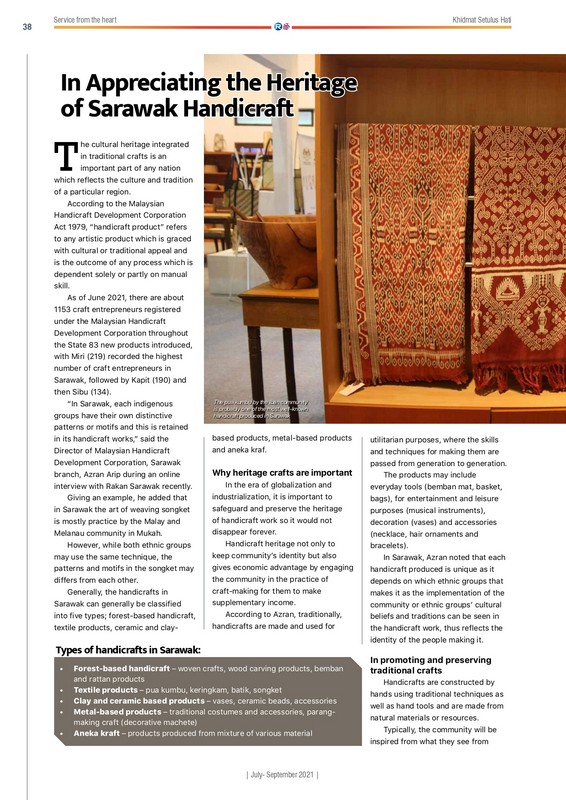
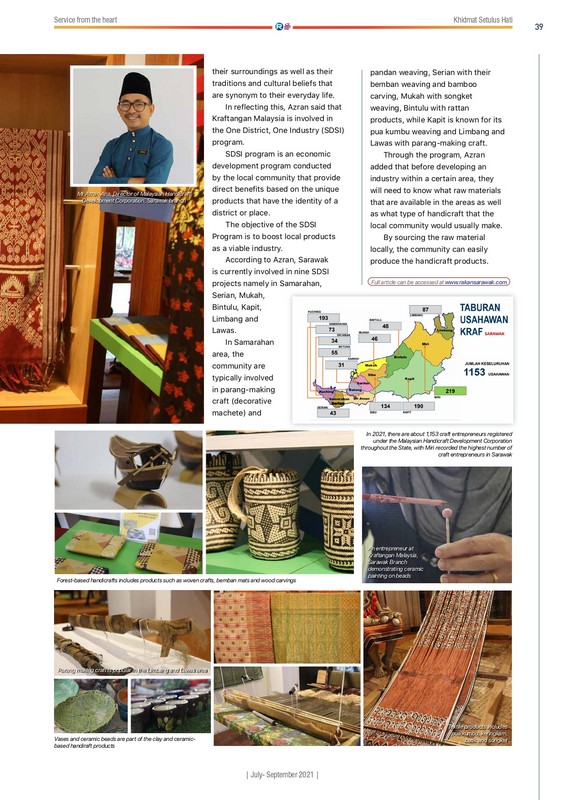
The cultural heritage integrated in traditional crafts is an important part of any nation which reflects the culture and tradition of a particular region.
According to the Malaysian Handicraft Development Corporation Act 1979, “handicraft product” refers to any artistic product which is graced with cultural or traditional appeal and is the outcome of any process which is dependent solely or partly on manual skill.
As of June 2021, there are about 1153 craft entrepreneurs registered under the Malaysian Handicraft Development Corporation throughout the State 83 new products introduced, with Miri (219) recorded the highest number of craft entrepreneurs in Sarawak, followed by Kapit (190) and then Sibu (134).
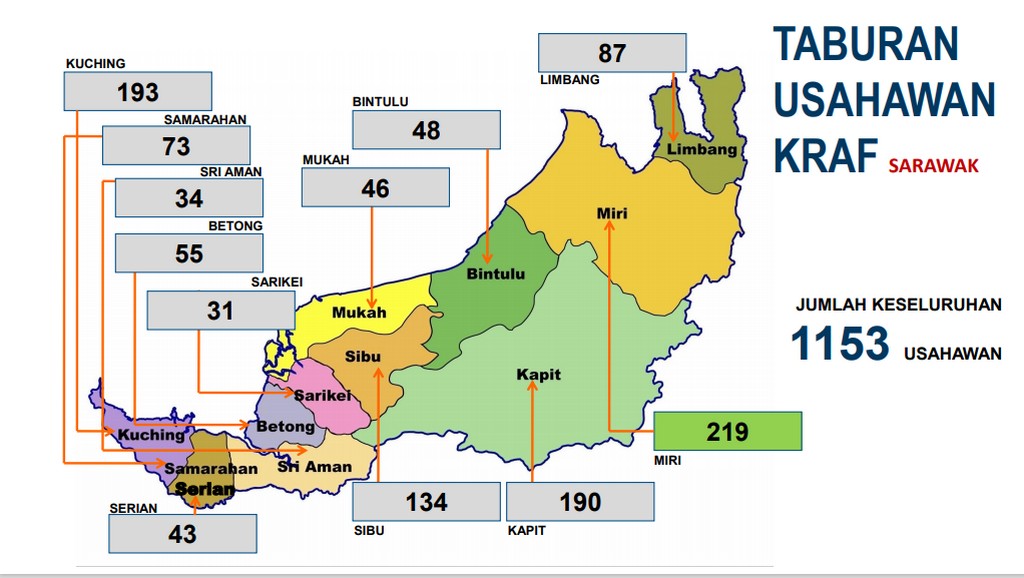
“In Sarawak, each indigenous groups have their own distinctive patterns or motifs and this is retained in its handicraft works,” said the Director of Malaysian Handicraft Development Corporation, Sarawak branch, Azran Arip during an online interview with RAKAN Sarawak.
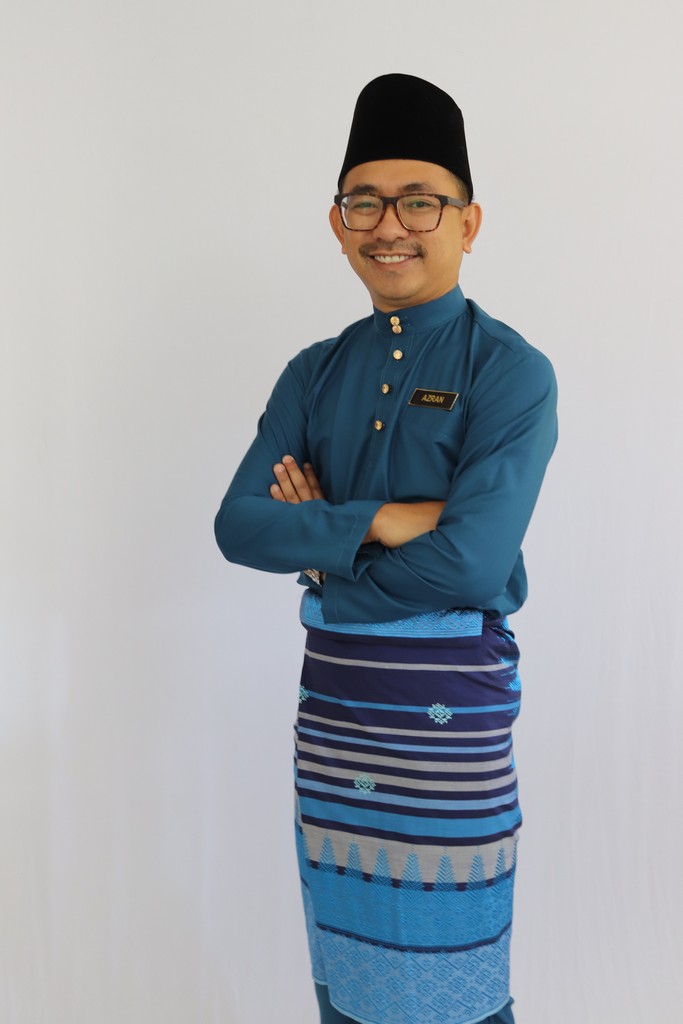
Giving an example, he added that in Sarawak the art of weaving songket is mostly practice by the Malay and Melanau community in Mukah.
However, while both ethnic groups may use the same technique, the patterns and motifs in the songket may differs from each other.
Generally, the handicrafts in Sarawak can generally be classified into five types; forest-based handicraft, textile products, ceramic and clay-based products, metal-based products and aneka kraf.
Types of handicrafts in Sarawak:
- Forest-based handicraft – woven crafts, wood carving products, bemban and rattan products
- Textile products – pua kumbu, keringkam, batik, songket
- Clay and ceramic based products – vases, ceramic beads, accessories
- Metal-based products – traditional costumes and accessories, parang-making craft (decorative machete)
- Aneka kraft – products produced from mixture of various material
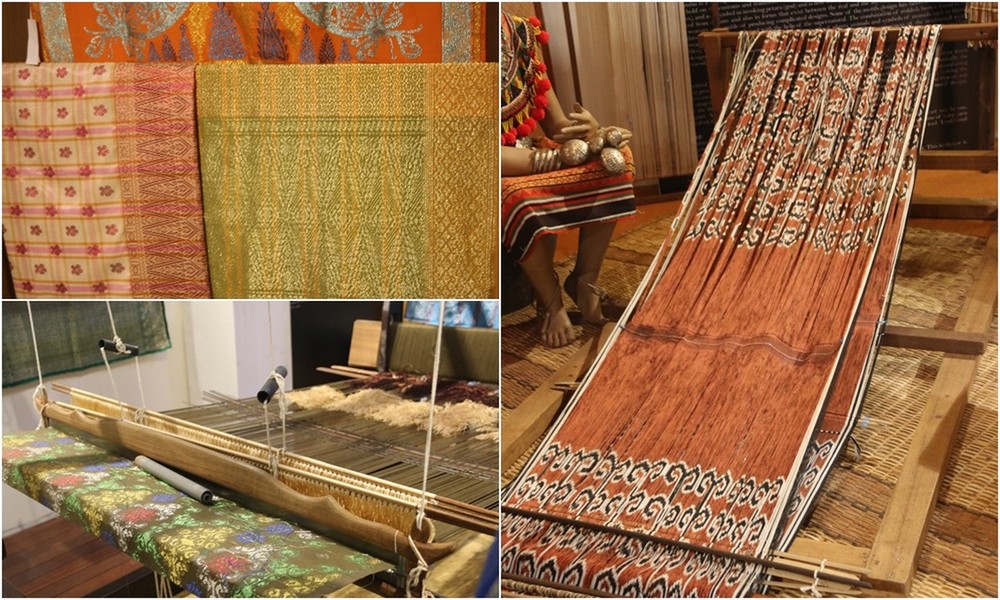
Why heritage crafts are important
In the era of globalization and industrialization, it is important to safeguard and preserve the heritage of handicraft work so it would not disappear forever.
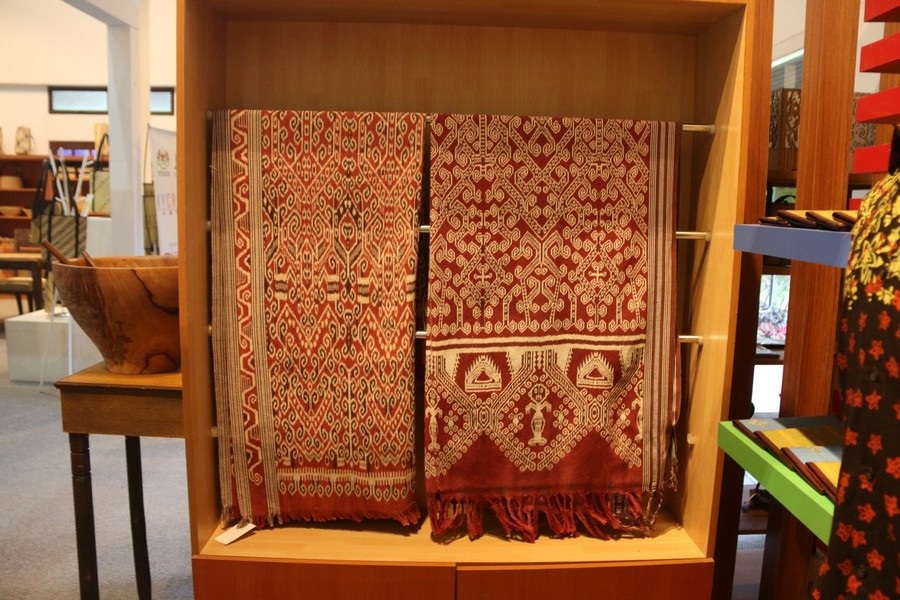
Handicraft heritage not only to keep community’s identity but also gives economic advantage by engaging the community in the practice of craft-making for them to make supplementary income.
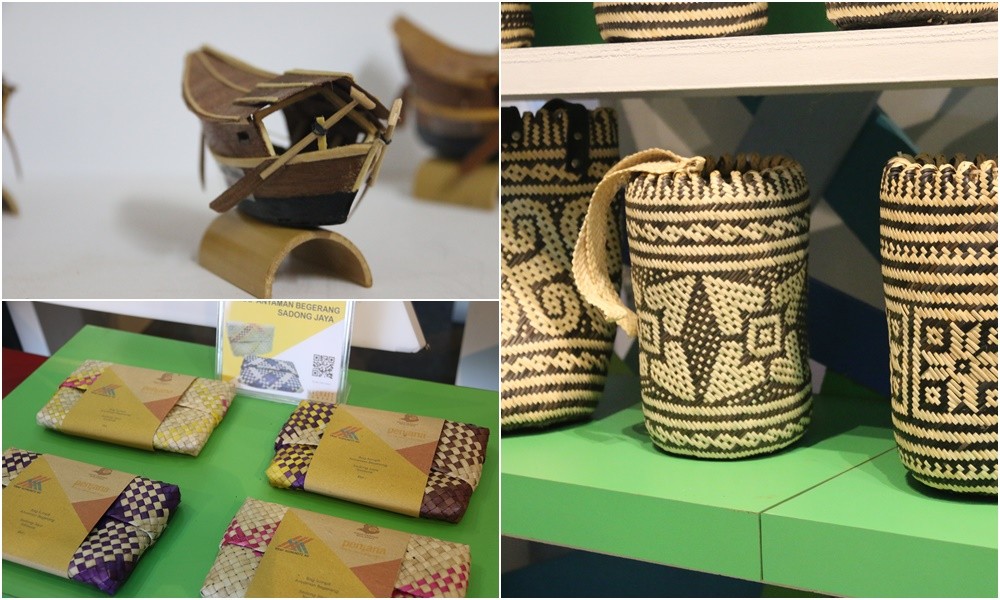
According to Azran, traditionally, handicrafts are made and used for utilitarian purposes, where the skills and techniques for making them are passed from generation to generation.
The products may include everyday tools (bemban mat, basket, bags), for entertainment and leisure purposes (musical instruments), decoration (vases) and accessories (necklace, hair ornaments and bracelets).
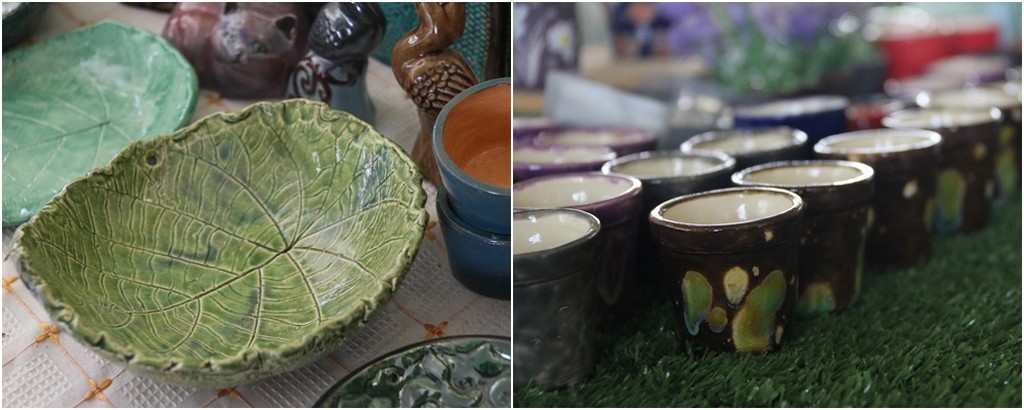
In Sarawak, Azran noted that each handicraft produced is unique as it depends on which ethnic groups that makes it as the implementation of the community or ethnic groups’ cultural beliefs and traditions can be seen in the handicraft work, thus reflects the identity of the people making it.
In promoting and preserving traditional crafts
Handicrafts are constructed by hands using traditional techniques as well as hand tools and are made from natural materials or resources.
Typically, the community will be inspired from what they see from their surroundings as well as their traditions and cultural beliefs that are synonym to their everyday life.
In reflecting this, Azran said that Kraftangan Malaysia is involved in the One District, One Industry (SDSI) program.
SDSI program is an economic development program conducted by the local community that provide direct benefits based on the unique products that have the identity of a district or place.
The objective of the SDSI Program is to boost local products as a viable industry.
According to Azran, Sarawak is currently involved in nine SDSI projects namely in Samarahan, Serian, Mukah, Bintulu, Kapit, Limbang and Lawas.
In Samarahan area, the community are typically involved in parang-making craft (decorative machete) and pandan weaving, Serian with their bemban weaving and bamboo carving, Mukah with songket weaving, Bintulu with rattan products, while Kapit is known for its pua kumbu weaving and Limbang and Lawas with parang-making craft.
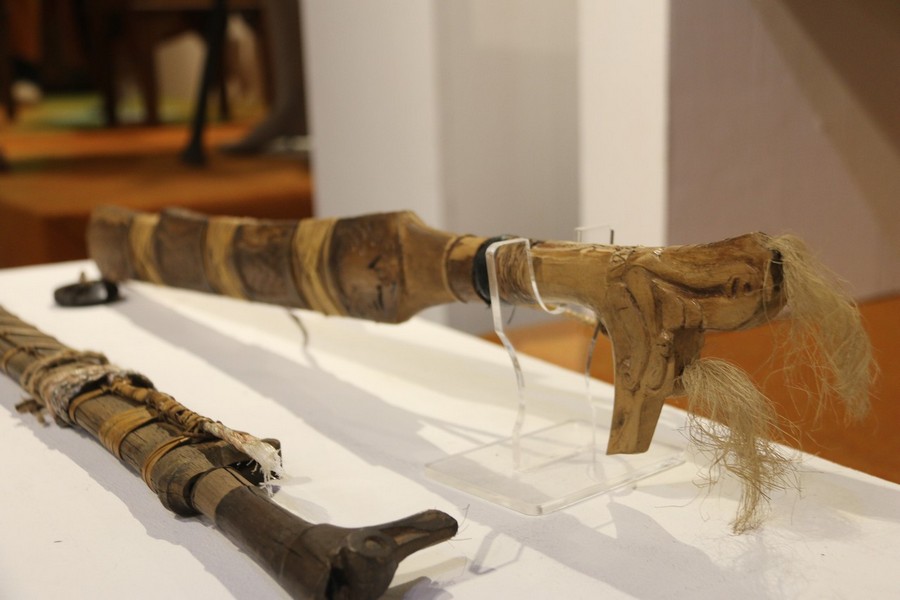
Through the program, Azran added that before developing an industry within a certain area, they will need to know what raw materials that are available in the areas as well as what type of handicraft that the local community would usually make.
By sourcing the raw material locally, the community can easily produce the handicraft products.
“In Sarawak, we can easily source for materials especially for the forest-based products such as rattan, bemban and wood,” he said.
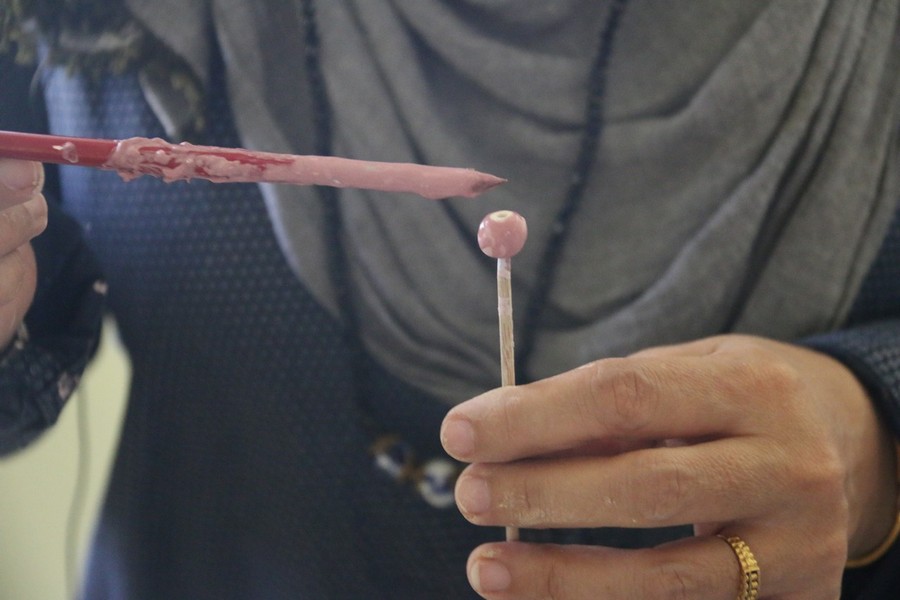
However, he added that Malaysia does not produce its own textile materials, thus causing the high cost for the production of textile handicraft.
He added that as of now, Malaysia is still importing textile materials such as silk, threads and other materials from countries such as China and India.
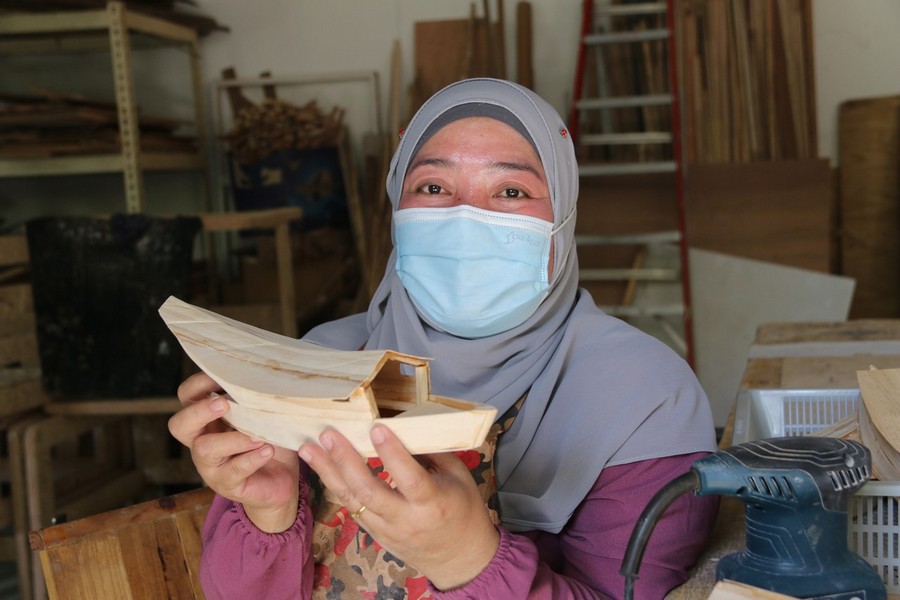
“We do have textile suppliers from Peninsular Malaysia, but they still import from other countries. And that is why the cost for textile handicraft is high in Sarawak,” he said.
Digital platform to promote handicrafts
Since the COVID-19 pandemic started last year, the sales for handicraft in Sarawak has plummeted.
Azran noted that the sales for handicraft have decreased significantly due to the limited physical activity of marketing and the promotion of handicraft products by the craft entrepreneurs.
In 2020, the initial sales target in Sarawak was reduced from RM30 million to RM12 million due to the pandemic.
By the end of 2020, the handicraft sales were recorded to be at RM17.4 million.
To help craft entrepreneurs nationwide overcome the difficulties of selling their products, the Malaysian Handicraft Development Corporation has introduced several online platforms in 2020 to help Malaysian craft entrepreneurs adapt their business digitally.
As of June this year, the handicraft sales shows recorded to be at RM8 million (36.3 per cent) against the RM22 million sales target since the digital platform has been introduced as a marketing channel of online craft products and services.
The platforms include E-Kraft Bazaar, My Craft Shoppe and Craft On The Go.
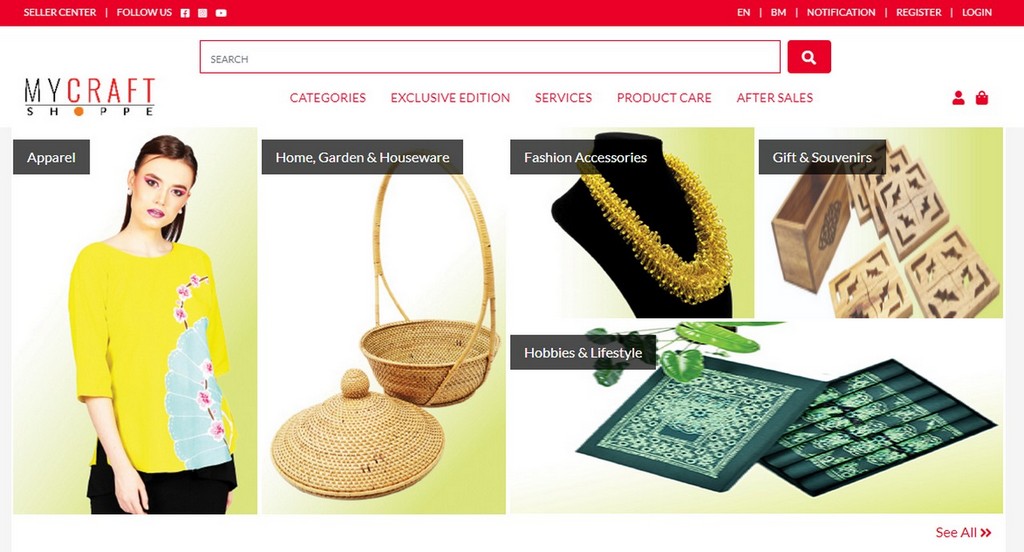
The E-Kraft Bazaar is a Facebook group platform specially dedicated for local craft entrepreneurs to share and market their products.
To date, there are currently 159 entrepreneurs from Sarawak participating in the Facebook group.
The Facebook group has 16, 500 members nationwide and from the year 2020 until 2021, the sales from the group has recorded to be at RM1.4 million.
On the other hand, My Craft Shoppe is an e-market place website where craft entrepreneurs across the country ranging from manufacturers, suppliers to distributors display their products to reach a wider market.
The website which is fully managed by Malaysian Handicraft has recorded about 66 entrepreneurs from Sarawak and 1481 stock keeping unit.
From here, consumers are offered a wide range of products available in the industry which is includes products, raw materials, product design, after sales services and information related to the craft industry.
Azran added that from the year 2020 until now, the sales are recorded to be at RM2, 422.
The Craft On The Go is a mobile application introduced by the Kraftangan Malaysian to help craft entrepreneurs market their products via online. Similar to a delivery apps, Craft On The Go has a navigation feature of the places selling various handicraft items by local entrepreneurs.
Related articles :




